Ford Mustang Mach-E vs Mercedes EQS – Which car suits you better?
Compare performance, boot capacity, efficiency and price at a glance.
Find out which car is the better choice for you – Ford Mustang Mach-E or Mercedes EQS?
Costs and Efficiency:
Looking at overall running costs, both models reveal some interesting differences in everyday economy.
Ford Mustang Mach-E has a convincingly advantage in terms of price – it starts at 48400 £, while the Mercedes EQS costs 93900 £. That’s a price difference of around 45472 £.
In terms of energy consumption, the advantage goes to the Mercedes EQS: with 16.50 kWh per 100 km, it’s barely noticeable more efficient than the Ford Mustang Mach-E with 17.70 kWh. That’s a difference of about 1.20 kWh.
As for range, the Mercedes EQS performs noticeable better – achieving up to 816 km, about 216 km more than the Ford Mustang Mach-E.
Engine and Performance:
Power, torque and acceleration are the classic benchmarks for car enthusiasts – and here, some clear differences start to show.
When it comes to engine power, the Mercedes EQS has a to a small extent edge – offering 544 HP compared to 487 HP. That’s roughly 57 HP more horsepower.
In acceleration from 0 to 100 km/h, the Ford Mustang Mach-E is somewhat quicker – completing the sprint in 3.80 s, while the Mercedes EQS takes 4.40 s. That’s about 0.60 s faster.
In terms of top speed, the Mercedes EQS performs hardly perceptible better – reaching 210 km/h, while the Ford Mustang Mach-E tops out at 200 km/h. The difference is around 10 km/h.
There’s also a difference in torque: Ford Mustang Mach-E pulls minimal stronger with 950 Nm compared to 858 Nm. That’s about 92 Nm difference.
Space and Everyday Use:
Beyond pure performance, interior space and usability matter most in daily life. This is where you see which car is more practical and versatile.
Both vehicles offer seating for 5 people.
In curb weight, Ford Mustang Mach-E is a bit lighter – 2161 kg compared to 2545 kg. The difference is around 384 kg.
In terms of boot space, the Mercedes EQS offers slightly more room – 610 L compared to 519 L. That’s a difference of about 91 L.
In maximum load capacity, the Mercedes EQS performs a bit better – up to 1770 L, which is about 350 L more than the Ford Mustang Mach-E.
When it comes to payload, Mercedes EQS clearly perceptible takes the win – 565 kg compared to 450 kg. That’s a difference of about 115 kg.
Who wins the race?
The Mercedes EQS proves to be has a very small edge and therefore becomes our DriveDuel Champion!
Mercedes EQS is the better all-rounder in this comparison.
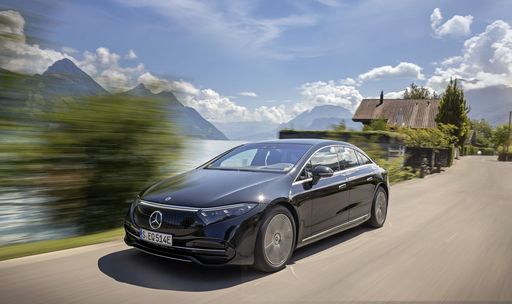
Mercedes EQS
Ford Mustang Mach-E
The Ford Mustang Mach-E marks a new chapter in the legacy of the iconic American brand, combining classic muscle car aesthetics with modern electric vehicle technology. Its sleek design captures the spirit of innovation while offering a spacious and tech-savvy interior for enhanced driving comfort. The Mach-E promises an exhilarating driving experience, packed with cutting-edge features that set a new standard for electric SUVs.
details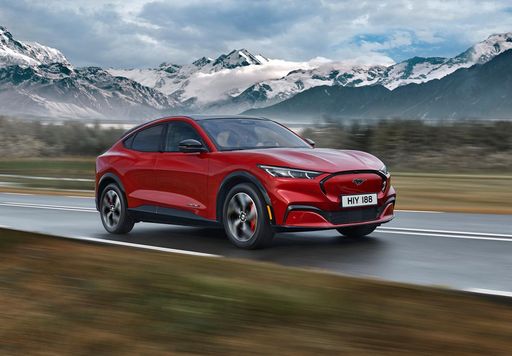 @ mustang.fordpresskits.com
@ mustang.fordpresskits.com
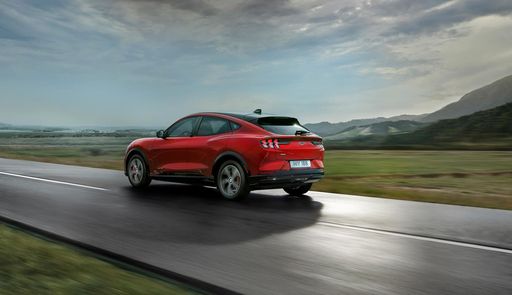 @ mustang.fordpresskits.com
@ mustang.fordpresskits.com
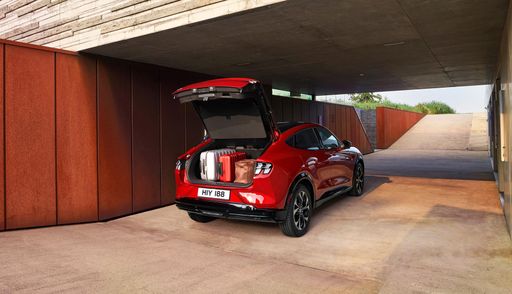 @ mustang.fordpresskits.com
@ mustang.fordpresskits.com
 @ mustang.fordpresskits.com
@ mustang.fordpresskits.com
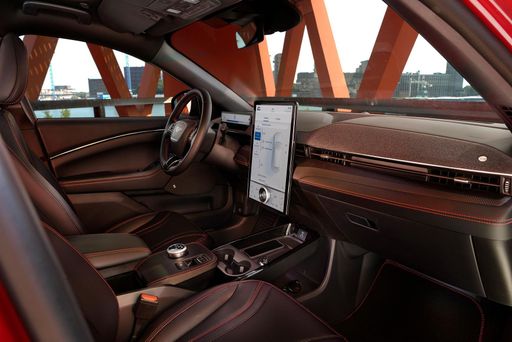 @ mustang.fordpresskits.com
@ mustang.fordpresskits.com
Mercedes EQS
The Mercedes-Benz EQS redefines luxury in the realm of electric vehicles, combining exceptional comfort with cutting-edge technology. Its sleek and aerodynamic design is a testament to both elegance and efficiency, setting new standards for the brand. Inside, the EQS offers a serene and spacious cabin equipped with the latest advancements, ensuring a refined driving experience.
details @ group-media.mercedes-benz.com
@ group-media.mercedes-benz.com
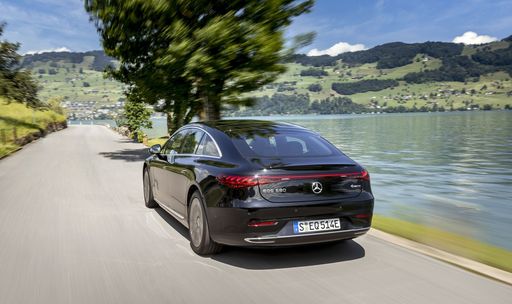 @ group-media.mercedes-benz.com
@ group-media.mercedes-benz.com
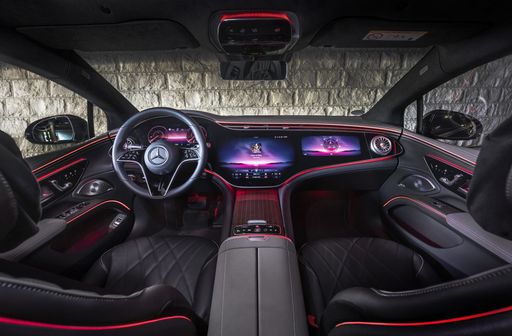 @ group-media.mercedes-benz.com
@ group-media.mercedes-benz.com
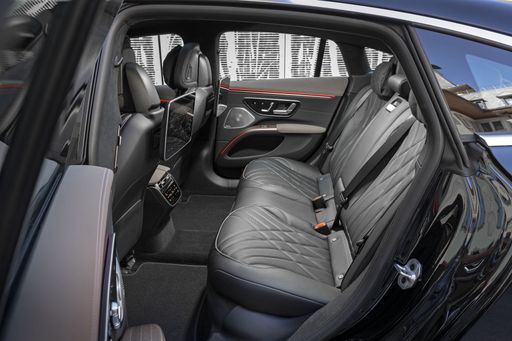 @ group-media.mercedes-benz.com
@ group-media.mercedes-benz.com
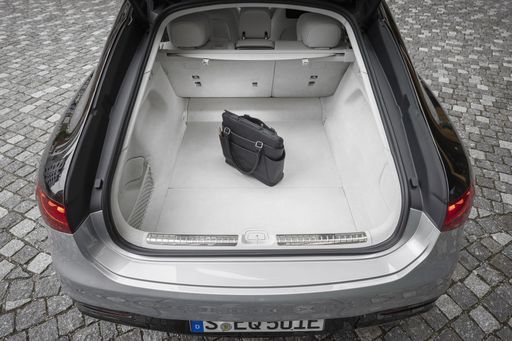 @ group-media.mercedes-benz.com
@ group-media.mercedes-benz.com

|

|
|
|
|
Costs and Consumption |
|
|---|---|
|
Price
48400 - 66900 £
|
Price
93900 - 123500 £
|
|
Consumption L/100km
-
|
Consumption L/100km
-
|
|
Consumption kWh/100km
17.7 - 21 kWh
|
Consumption kWh/100km
16.5 - 17.2 kWh
|
|
Electric Range
470 - 600 km
|
Electric Range
790 - 816 km
|
|
Battery Capacity
73 - 91 kWh
|
Battery Capacity
118 kWh
|
|
co2
0 g/km
|
co2
0 g/km
|
|
Fuel tank capacity
-
|
Fuel tank capacity
-
|
Dimensions and Body |
|
|---|---|
|
Body Type
SUV
|
Body Type
Hatchback
|
|
Seats
5
|
Seats
5
|
|
Doors
5
|
Doors
5
|
|
Curb weight
2161 - 2351 kg
|
Curb weight
2545 - 2655 kg
|
|
Trunk capacity
519 L
|
Trunk capacity
610 L
|
|
Length
4713 - 4743 mm
|
Length
5223 mm
|
|
Width
1881 mm
|
Width
1926 mm
|
|
Height
1613 - 1624 mm
|
Height
1512 mm
|
|
Max trunk capacity
1345 - 1420 L
|
Max trunk capacity
1770 L
|
|
Payload
368 - 450 kg
|
Payload
550 - 565 kg
|
Engine and Performance |
|
|---|---|
|
Engine Type
Electric
|
Engine Type
Electric
|
|
Transmission
Automatic
|
Transmission
Automatic
|
|
Transmission Detail
Reduction Gearbox
|
Transmission Detail
Reduction Gearbox
|
|
Drive Type
Rear-Wheel Drive, All-Wheel Drive
|
Drive Type
All-Wheel Drive, Rear-Wheel Drive
|
|
Power HP
268 - 487 HP
|
Power HP
360 - 544 HP
|
|
Acceleration 0-100km/h
3.8 - 6.2 s
|
Acceleration 0-100km/h
4.4 - 6.2 s
|
|
Max Speed
180 - 200 km/h
|
Max Speed
210 km/h
|
|
Torque
525 - 950 Nm
|
Torque
568 - 858 Nm
|
|
Number of Cylinders
-
|
Number of Cylinders
-
|
|
Power kW
197 - 358 kW
|
Power kW
265 - 400 kW
|
|
Engine capacity
-
|
Engine capacity
-
|
General |
|
|---|---|
|
Model Year
2025
|
Model Year
2024
|
|
CO2 Efficiency Class
A
|
CO2 Efficiency Class
A
|
|
Brand
Ford
|
Brand
Mercedes-Benz
|
What drive types are available for the Ford Mustang Mach-E?
The Ford Mustang Mach-E is offered with Rear-Wheel Drive or All-Wheel Drive.
The prices and data displayed are estimates based on German list prices and may vary by country. This information is not legally binding.
